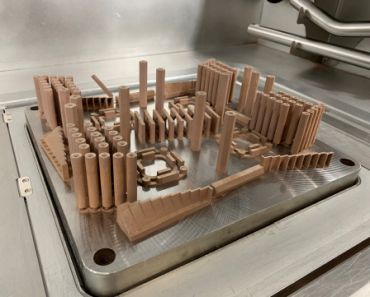Proprietary Copper 3D Printing Technology Developed for NASA

Sintavia, LLC, a designer and 3D printer of a new generation of flight and launch components, has developed proprietary printing technology for GRCop-42, the preferred copper alloy used by NASA and private space flight companies for rocket thrust chamber assemblies.
The new technology, which is a combination of a proprietary parameter set and post-processing heat treatment, was developed on an EOS GmbH M400-4 printer, and results in GRCop-42 components with minimum density of 99.94%, minimum tensile strength of 28.3 ksi, minimum ultimate yield strength of 52.7 ksi, and minimum elongation of 32.4%.
Importantly, the technology avoids the use of a hot isostatic press in post-processing steps, thereby reducing the time, complexity, and cost of production.
"Today's announcement marks the first time we have publicly disclosed Sintavia's ongoing material development efforts," said Pavlo Earle, Sintavia's Vice President of Engineering. "As a company, we are uniquely positioned to unlock the potential of printing difficult materials cost-effectively and with excellent mechanical properties. The fact that we were able to achieve these levels of performance on GRCop-42 -- by all indications a very difficult metal for additive manufacturing -- further cements Sintavia's role as the global leader in the application of AM within the Aerospace, Defense, and Space industry."
Mr. Earle added that Sintavia is currently developing proprietary standards for other materials, including refractory alloys, for use across the Aerospace, Defense, & Space industry.
Want more information? Click below.
Rate this article
View our terms of use and privacy policy ::m::